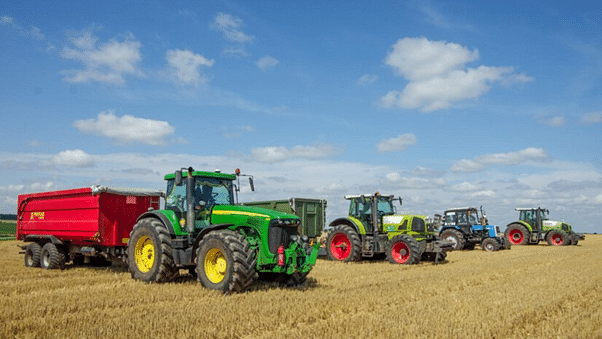Choosing between a 2WD tractor and a 4WD tractor is a crucial decision for farmers. The right tractor enhances efficiency, reduces operational costs, and improves productivity. Whether you need a small 4WD tractor for rugged terrain or a 2WD tractor for everyday farming, understanding their differences can help you make the best choice.
What is a 2WD Tractor?
A 2-wheel drive (2WD) tractor has power delivered only to the rear wheels. These tractors are widely used for small to medium-scale farming and offer better maneuverability in tight spaces.
Advantages of 2WD Tractors:
- Cost-Effective: 2WD tractors are more affordable than 4WD models, making them ideal for farmers on a budget.
- Lower Maintenance Costs: Fewer mechanical components result in lower repair and servicing expenses.
- Better Maneuverability: Perfect for small farms with narrow rows and tight turns.
- Fuel-Efficient: Consumes less fuel, making it a cost-effective option for light agricultural tasks.
Best Uses of 2WD Tractors:
- Suitable for flat or mildly uneven terrains.
- Ideal for plowing, tilling, and light transportation.
- Works well in dry soil conditions.
What is a 4WD Tractor?
A 4-wheel drive (4WD) tractor, also known as a tractor 4x4 with loader, has power supplied to all four wheels, providing better traction and stability. These tractors are designed for challenging terrains and heavy-duty tasks.
Advantages of 4WD Tractors:
- Superior Traction: Works efficiently in muddy, rocky, and uneven fields.
- Higher Power & Load Capacity: Can pull heavy loads and operate larger implements.
- Increased Efficiency: Reduces slippage, making it perfect for wet conditions.
- Versatility: Suitable for multiple applications, including plowing, tilling, and hauling.
Best Uses of 4WD Tractors:
- Recommended for large farms with difficult terrains.
- Ideal for commercial farming, heavy-duty lifting, and pulling large implements.
- Works efficiently in wet or hilly areas.
2WD vs. 4WD Tractors: A Quick Comparison
| Feature | 2WD Tractor | 4WD Tractor |
| Cost | Lower | Higher |
| Fuel Efficiency | Better | Slightly lower |
| Traction | Limited | Superior |
| Terrain Suitability | Flat land | Rough, hilly, or wet terrain |
| Load Capacity | Moderate | High |
| Maintenance | Lower | Higher |
Which Tractor Should You Choose?
- Choose a 2WD tractor if you have a small farm, operate on level land, and need an affordable, fuel-efficient solution.
- Opt for a 4WD tractor if you have a large farm, work on tough terrains, and require high power for heavy-duty farming tasks.
Conclusion
Selecting between a 2WD vs. 4WD tractor depends on your farm size, terrain, and budget. If you need a budget-friendly, fuel-efficient option, a 2WD tractor is a great choice. However, if you require power, stability, and better traction for rugged terrains, investing in a 4WD tractor is the right decision.
For more details on 4WD tractor prices, models, and comparisons, visit 91tractors, your trusted source for commercial vehicle insights.










